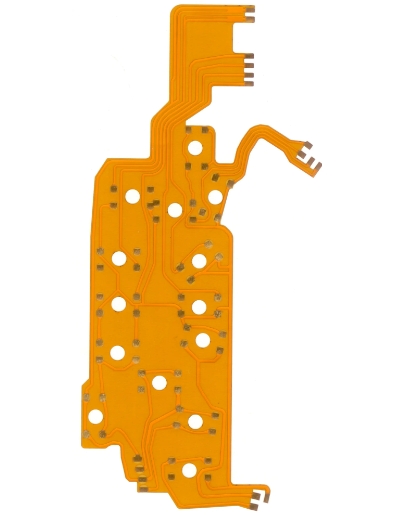
The production process of flexible printed circuit boards is basically similar to that of rigid boards. For some operations, the flexibility of laminates requires different devices and completely different treatment methods. Most flexible printed circuit boards adopt a negative approach. However, there are some difficulties in the mechanical processing and coaxial processing of flexible laminates. One of the main problems is the treatment of substrates. Flexible materials are coils of different widths, so rigid brackets are needed for the transmission of flexible laminates during etching.

In the production process, the processing and cleaning of flexible printed circuit is more important than that of rigid board (Lexin, 1993). Improper cleaning or violation of regulations may lead to failure in subsequent product manufacturing, which is due to the sensitivity of materials used in flexible printed circuits, which plays an important role in the manufacturing process. Substrate is affected by mechanical pressure such as wax drying, lamination and electroplating. Copper foil is also susceptible to impact and dent. The extension part ensures maximum flexibility. Mechanical damage or work hardening of copper foil will reduce the flexibility life of the circuit.
Typical flexible one-sided circuits need to be cleaned at least three times during manufacturing. However, multi-substrates need to be cleaned three to six times due to their complexity. In contrast, rigid multilayer printed circuit boards may require the same number of cleaning times, but different cleaning procedures require more care when cleaning flexible materials. Even under very light pressure during cleaning, the spatial stability of flexible materials will be affected, and the panel will be elongated in Z or Y direction, depending on the bias of pressure. Chemical cleaning of flexible printed circuit boards should pay attention to environmental protection.
The cleaning process includes alkaline dyeing bath, thorough rinsing, Micro-etching and final cleaning. Damage to membrane materials often occurs in the process of panel mounting, when stirred in the pool, when shelves are removed from the pool or when no shelves are erected, and when surface tension is damaged in the clearing pool. The holes in flexible plates are usually punched, which leads to higher processing costs.
Borehole drilling is also possible, but it requires special adjustment of drilling parameters to obtain non-stained wall. After drilling, the drilling dirt is removed from the water cleaner with ultrasonic stirring.
It has been proved that mass production of flexible boards is cheaper than rigid printed circuit boards. This is because flexible laminates enable manufacturers to produce circuits on a continuous basis. This process starts with laminated sheet coil and can directly produce finished sheets. In order to produce printed circuit boards and etch a continuous processing schematic of flexible printed circuit boards, all production processes are performed in a series of sequential placement machines. Screen printing may not be part of this continuous transmission process, which results in the interruption of the online process.
Usually, due to the limited thermal resistance of the substrate, welding in flexible printed circuit becomes more important. Manual welding requires sufficient experience, so wave soldering should be used if possible. When welding flexible printed circuit, the following points should be paid attention to:
1) Because polyimide has hygroscopicity, the circuit must be baked before welding (lasting for 1 hour in 250 degrees F).
2) When the pad is placed on a large conductor area, such as the ground layer, the power supply layer or the radiator, the heat dissipation area should be reduced. This limits the heat dissipation and makes welding easier.
3) When manual welding pins in dense areas, it is necessary to avoid continuous welding of adjacent pins and move welding back and forth to avoid local overheating.
As a single PCB manufacturer, PCBSky sells various printed circuit boards to the outside world all year round. Welcome to consult!